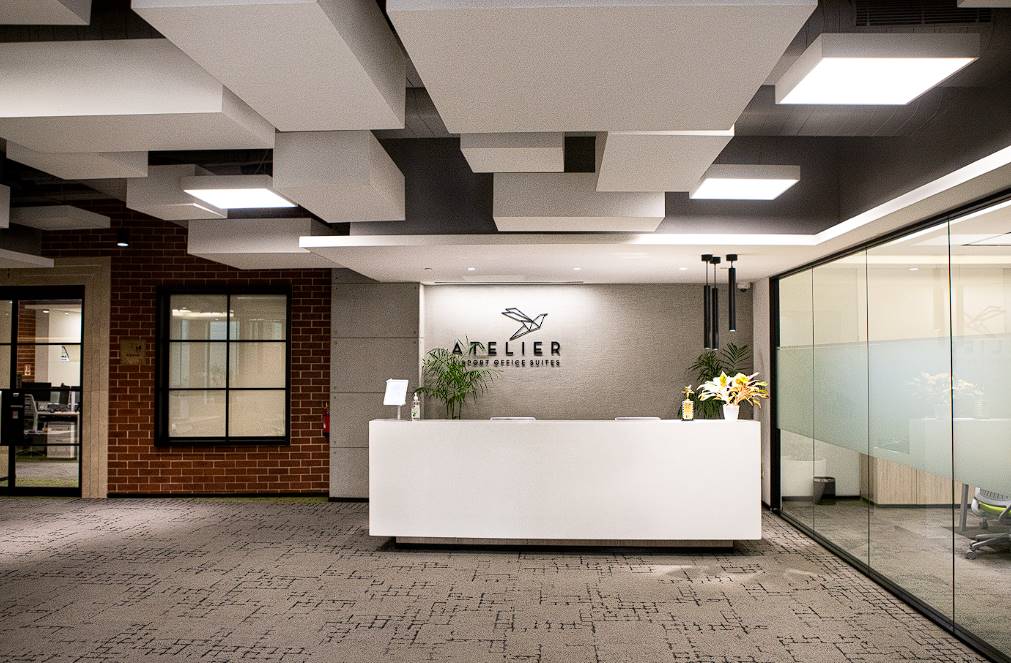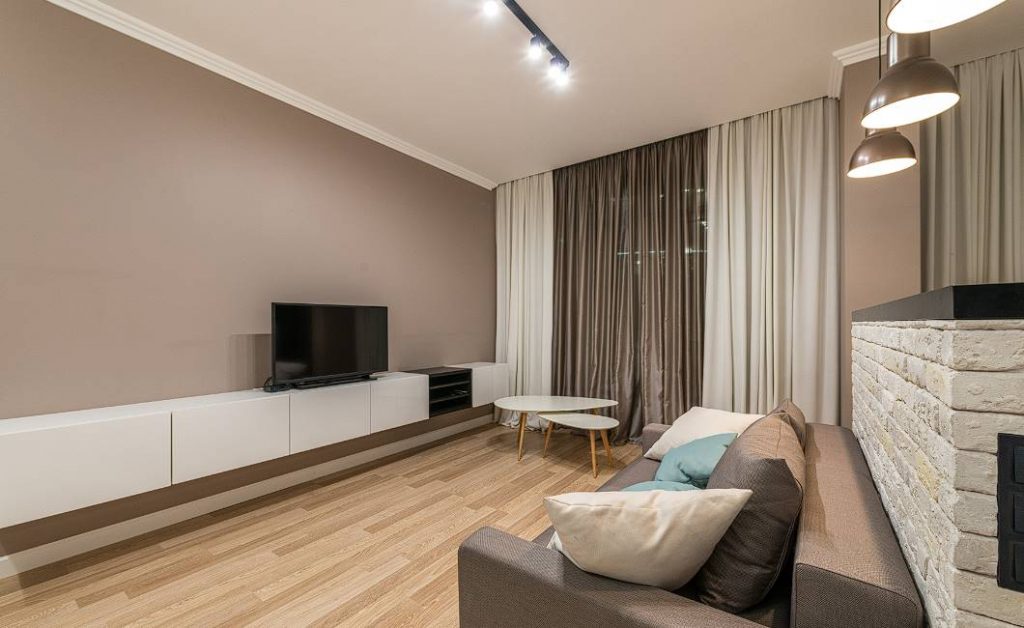Do you want to install tin ceiling tiles in your business or home? Have you been debating whether or not to go with them? To assist you in making a well-informed choice, this blog post will examine the benefits and drawbacks of installing tin ceiling tiles. Let's delve into and examine the benefits and drawbacks of these ornamental features.
Tin ceiling tiles bring a classic and sophisticated look to any room. They have a timeless quality that works well in contemporary and classic settings. Tin ceiling tiles are visually appealing because of the attention to detail in their patterns and textures. These tiles are not only long-lasting but also low-maintenance. Their durability makes them immune to dings and scuffs, so your new ceiling will look great for years.
But the downsides must be taken into account. Tin ceiling tiles can be difficult to install, one of their major drawbacks. These tiles require accuracy and experience to install correctly. If you want your installation to go off without a hitch, it's best to employ a pro. In addition, tin ceiling tiles are often more costly than other materials. It's important to consider the price while determining if they fit your design plan and budget.
Tin ceiling tiles have many other benefits and drawbacks besides those listed here. In this essay, we'll look deeper into the topic, and potential pitfalls, discussing additional benefits and helpful hints for choosing the perfect tiles for your purposes. Get ready to make a wise choice after learning all there is to know about tin ceiling tiles from us!
Our blog post will serve as a comprehensive guide to tin ceiling tiles for anyone wishing to incorporate them into their house for a more refined feel or into their place of business for a more inviting atmosphere. Insights, guidance, and pros' recommendations will be coming soon to help you decide what's best for your area.
Understanding Tin Ceiling Tiles
Tin ceiling tiles are decorative metal panels with ornate patterns that were first used to improve the look of ceilings. They are made of tin-plated steel and come in various textures and plating designs. These tiles are a great way to add a little history and visual appeal to your home. Tin ceiling tiles are great for restoring an older structure and giving a contemporary room a touch of nostalgia.
These tiles are attractive, but they have other benefits as well. They are also well-known for the useful effects they have. Tin ceiling tiles are fireproof, long-lasting, and simple to clean and repair. They are durable enough to last for decades while still looking stunning. The noise levels in a space can be decreased, and the overall acoustics can be improved with the help of these tiles.

Pros Of Having Tin Ceiling Tiles
Tin ceiling tiles are amazing because they may improve a room's look while being functional. Plunge into a sea of incredible advantages that will astound you.
Practical
Enjoy the enchantment of tin ceiling tiles, which won't absorb moisture. Effortlessly repelling even the most persistent stains, this extraordinary material maintains a clear and spotless surface.
Unyielding Durability
Take refuge behind a wall of defence against grime, mould, rust, and mildew. Water, fire and time are no match for tin ceiling tiles, which have perfected the art of withstanding the elements. They personify the very concepts of longevity and toughness.
Maintenance Made Effortless
Forget about spending your free time cleaning. Tin ceiling tiles only require a short, periodic dusting to keep their shiny appearance. Reduce the time you spend on upkeep to relax and enjoy your home.
Fire Protection At Its Finest
Fireproof tiles are a great way to increase security in bathrooms, kitchens, and other high-risk spaces. Tin ceiling tiles provide a robust defence, allowing you to relax.
Value Amplification
The price of your home is about to skyrocket. In addition to its unmatched durability and timeless charm, tin ceiling tiles also have the power to increase your home's value. These exceptional tiles are a long-term investment that will pay off handsomely.
Effortless Installation
Let your inner do-it-yourselfer out! Tin ceiling tiles can be easily installed without any specialised equipment. The nail-up approach is a fun and easy way to realise your ideas.
Cons Of Having Tin Ceiling Tiles
Like other metal ceiling tiles, tin ceiling tiles have relatively few drawbacks. However, you should still be aware of them before deciding whether or not to use this material.
Cost
Costs can be far more than for something made of PVC, for example. Corrosion protection coatings are an unnecessary extra expense.
What Are The Types Of Ceiling Tiles?
Ceiling tiles are a common component in the design and construction of indoor environments. These lightweight panels can be fitted to improve the acoustics, aesthetics, and practicality of a ceiling. These tiles can be created from various materials, each with drawbacks and benefits. Common examples include gypsum, mineral fibre, plastic and metal.
There are many applications for ceiling tiles. In the first place, they can improve the visual appeal of a space by changing its ceiling pattern, texture, or colour. They may be customised to fit individual tastes and preferences thanks to their wide variety of styles, including smooth, patterned finishes and textured. There's a wide selection of ceiling tiles that all serve different purposes. Some typical ceiling tile varieties include:
Acoustic Ceiling Tiles
These tiles were created to lessen echo and reverberation in a room. The acoustics of a space can be greatly enhanced by installing them, as they are typically constructed from porous materials like mineral fibre or fibreglass. When a quieter environment is needed, acoustic ceiling tiles are frequently used. This includes offices, theatres, classrooms, and other public places.
Drop Ceiling Tiles
Suspended ceiling tiles are a common sight in both commercial spaces and basements of homes around the country. Drop ceiling tiles are simple to install because of their lightweight and grid-based design. For cleaning or fixing purposes, they allow access to the area above the ceiling. Mineral fibre, PVC, metal, and gypsum are just some of the components from which these tiles can be made.
Tin Ceiling Tiles
Ceilings with pressed metal or tin ceiling tiles are attractive and retro. Made from tin-plated steel, they come in various coatings or designs. Tin ceiling tiles are popular for venues that want to convey a vintage or industrial vibe, such as shops, restaurants, and even private homes.
PVC Ceiling Tiles
Long-lasting, lightweight, and impervious to water, ceiling tiles made from PVC (polyvinyl chloride) are an excellent choice for humid rooms like kitchens and bathrooms. These tiles can be found in various patterns, and many can convincingly imitate the look of other materials, including metal, stone, and wood. The tiling on a PVC ceiling is low maintenance.
Fibreglass Ceiling Tiles
Thin glass wool fibres are squeezed and fused to create a tile for the ceiling. They're easy on the eyes, safe from flames, and great at dampening noise. Fibreglass ceiling tiles are frequently employed in facilities where fire prevention and acoustic performance are of the utmost importance, such as schools, hospitals, and businesses.
Gypsum Ceiling Tiles
Gypsum plaster is used to create drywall ceiling tiles, also known as plasterboard ceiling tiles. They find widespread application in both public and private structures. Smooth, readily painted, or textured gypsum tiles may be a great addition to any area.
Ways To Install Ceiling Tiles
Ceiling Tiles For A Decorative Finish
Installing ceiling tiles with a beautiful finish is an excellent method to improve a room's aesthetic. Here is a detailed installation instruction to get you started:
- Gather The Necessary Materials:
- Ceiling tiles
- Utility knife
- Safety goggles and gloves
- Adhesive or nails (depending on the tile type)
- Measuring tape
- Pencil or chalk
- Ladder or scaffolding
- Prepare The Ceiling: Make sure there is no dust or peeling paint on the ceiling. Carefully take down any existing ceiling tiles.
- Measure The Ceiling: Take accurate measurements of the ceiling so you know how many tiles to order. Use a measuring tape and some chalk or a pencil to mark the exact centre of the ceiling.
- Install The First Tile: Put glue down or use nails to fasten the first tile to the ceiling at the halfway point. The tile must be level and parallel to the walls.
- Install Subsequent Tiles: To continue a pattern or design, set the next tile next to the original one. If the tiles need to be trimmed to fit around the perimeter of the ceiling or any fittings, you can do so with a measuring tape and utility knife. Secure each tile in place with adhesive or nails. While working your way out from the centre, repeat this procedure until all the tiles have been laid.
- Finishing Touches: Check the tiles for alignment and make any required revisions once they are all set. Remove any leftover tile glue and clean the tiles thoroughly. Follow the manufacturer's directions for drying time before using the adhesive.

For Surface-Mount Ceiling Tiles
Ceiling tiles installed on the ceiling's surface are popular for covering up imperfections like popcorn ceilings and water damage. However, before doing anything else, you should address any ceiling leaks that may have produced stains or water damage.
Because they can be installed directly into drywall, joists, popcorn ceilings, and plaster, surface-mount ceiling tiles are more time- and labor-efficient to install than learning how to plaster a ceiling. Get these ready:
- Surface-mount ceiling tiles
- Pencil and tape measure
- Adhesive
- Caulking gun
- Paint roller
- Chalk snap line
- Ladder/tower
- Measure and prep: You may calculate the number of ceiling tiles you'll need by measuring the room's area (length x breadth). Ten per cent more than you anticipate needing is a safe bet. The next step is to scrub the ceiling and smooth out any rough spots. Priming the surface before applying the adhesive can improve its hold.
- Mark and start at the center of the room: First, find the centre of each exterior wall using a measuring tape, and then draw a chalk line across the ceiling to designate the centre.
- Apply adhesive and lay the tiles: Use your pencil to make a dot in the middle of each of the first tile's four corners. Then, centre the marks on the ceiling by aligning the pencil lines with the chalk lines. If you want to ensure it stays put, go over it with a dry paint roller until satisfied. After that, lay further rows of tiles until you've covered the entire surface or until you hit the wall.
- Measure and cut edge tiles: When you get to the walls, you'll have to trim the tiles to make them fit. Use your utility knife and measuring tape to cut the tiles to size. Edge tiles are adhered to the ceiling using glue, and the process is repeated around the room.
Conclusion
Tin ceiling tiles are decorative metal panels with ornate patterns that were first used to improve the look of ceilings. They are long-lasting and low-maintenance, making them immune to dings and scuffs. However, they can be difficult to install and are often more costly than other materials. To make a wise choice, it is important to consider the price while determining if they fit your design plan and budget. Tin ceiling tiles are great for restoring an older structure and giving a contemporary room a touch of nostalgia.
Tin ceiling tiles are fireproof, long-lasting, and simple to clean and repair. They are fireproof, long-lasting, and simple to clean and repair, and can improve the acoustics, noise levels, and overall acoustics of a space. Pros of having tin ceiling tiles include practicality, unyielding durability, easy maintenance, fire protection, value amplification, and easy installation. Cons of having tin ceiling tiles include cost and corrosion protection coatings. Ceiling tiles can be created from various materials, such as gypsum, mineral fibre, plastic, and metal.
Content Summary
- Tin ceiling tiles bring a classic and sophisticated look to any room.
- They have a timeless quality that works well in contemporary and classic settings.
- Tin ceiling tiles are visually appealing due to the attention to detail in their patterns and textures.
- They are long-lasting and low-maintenance, immune to dings and scuffs.
- Tin ceiling tiles can be difficult to install and require accuracy and experience.
- Professional installation is recommended for a seamless installation.
- Tin ceiling tiles are often more costly than other materials.
- The price of tin ceiling tiles should be considered when planning the budget.
- Tin ceiling tiles are fireproof, providing increased safety in high-risk areas.
- They are durable enough to last for decades while maintaining their stunning appearance.
- Tin ceiling tiles can decrease noise levels and improve acoustics in a space.
- Tin ceiling tiles can add a touch of nostalgia and history to a home.
- Tin ceiling tiles are practical and do not absorb moisture.
- They repel stains and are easy to clean and maintain.
- Tin ceiling tiles offer unyielding durability against grime, rust, and mildew.
- Maintenance of tin ceiling tiles is effortless and only requires periodic dusting.
- Tin ceiling tiles provide excellent fire protection, especially in bathrooms and kitchens.
- They can increase the value of a home due to their durability and timeless charm.
- Tin ceiling tiles are easy to install without specialized equipment using the nail-up approach.
- Tin ceiling tiles have relatively few drawbacks compared to other materials.
- Cost is a consideration as tin ceiling tiles can be more expensive than PVC.
- Ceiling tiles come in various materials such as gypsum, mineral fiber, plastic, and metal.
- Acoustic ceiling tiles are used to improve the sound quality in a room.
- Drop ceiling tiles are lightweight and allow access to the area above the ceiling.
- Tin ceiling tiles are popular for creating a vintage or industrial vibe in spaces.
- PVC ceiling tiles are durable and suitable for humid rooms like kitchens and bathrooms.
- Fiberglass ceiling tiles are safe from flames and effective at dampening noise.
- Gypsum ceiling tiles offer a smooth and customizable finish.
- Installation instructions are provided for both decorative and surface-mount ceiling tiles.
- Surface-mount ceiling tiles are efficient for covering imperfections and require adhesive for installation.
Frequently Asked Questions
Strength. Metal ceiling tiles are much stronger and less prone to breaks and cracks than mineral fibre tiles. Installing metal ceiling tiles still allows for easy access to the void but means that when work is being carried out there is less fear of snapping the tiles when stepping through or opening them.
Ceiling tiles are so expensive due to the installation fees, type of material used, and how the ceiling tiles are made. There are many ways to avoid high costs such as avoiding top brands, buying tiles with cheaper material, and installing the product yourself if possible.
Tin ceiling tiles can be easily cleaned. Dusting them with a soft-bristled brush or a vacuum with a brush attachment can remove loose debris. A mild cleaning solution of warm water and gentle dish soap or all-purpose cleaner can be used to wipe down the tiles. Avoid abrasive cleaners and excessive pressure to prevent damage. Rinse with plain water and dry thoroughly to avoid water spots.
- Recycled Steel. Utilises steel already in existence for structural use in a home.
- Bamboo. Bamboo is increasing in popularity as a building material.
- Sheep's Wool.
- Straw Bales.
- Precast Concrete.
- Earth.
- Plant-Based Polyurethane Rigid Foam.
Tin ceiling tiles are primarily decorative elements and do not provide significant insulation or direct energy efficiency benefits on their own. They are typically installed over an existing ceiling surface and do not have insulating properties inherent to the material. However, tin ceiling tiles can contribute to energy efficiency indirectly by creating an additional layer between the room and the ceiling, which can help with heat distribution and air circulation.
In terms of insulation, tin ceiling tiles can have a minimal effect by creating a small air gap between the existing ceiling and the tiles themselves. This air gap may provide a slight insulation value by reducing the direct transfer of heat between the room and the ceiling. However, the insulation benefit is generally minimal and can vary depending on factors such as the size of the air gap and the overall construction of the building.
To improve energy efficiency and insulation in a room, it is more effective to focus on other elements such as proper insulation in walls and ceilings, energy-efficient windows and doors, sealing air leaks, and using efficient heating and cooling systems. These measures have a more significant impact on energy efficiency compared to tin ceiling tiles alone.









